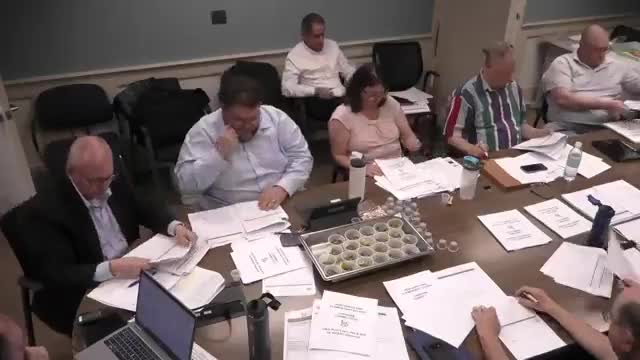Soil testing reveals 2100 cubic yards of contaminated topsoil at Mount Norton site
June 30, 2025 | Town of Cheshire, New Haven County, Connecticut
Thanks to Scribe from Workplace AI , all articles about Connecticut are free for you to enjoy throughout 2025!

This article was created by AI using a video recording of the meeting. It summarizes the key points discussed, but for full details and context, please refer to the video of the full meeting. Link to Full Meeting
The discussion began with a detailed breakdown of the testing costs, which totaled $21,346.10. This included expenses for sample collection and analysis, with the testing agency charging $1,000 per visit and $9.29 per sample. The committee noted that while clean soil could be removed from the site without additional costs, polluted soil could potentially be reused on-site, depending on available space. However, the contaminated soil, amounting to about 2,100 cubic yards, must be disposed of properly, adhering to EPA and DEP regulations.
As the meeting progressed, members expressed concern over the implications of naturally occurring heavy metals found in the clean soil. Although these levels exceeded the minimum thresholds set by the Department of Energy and Environmental Protection (DEEP), the committee was reassured that the soil could still be utilized for non-structural purposes, such as playgrounds. However, the need to notify DEEP before any off-site movement of this soil added another layer of complexity to the project.
The timeline for addressing the topsoil situation was also a focal point of the discussion. Plans were initially in place to begin removing the clean soil immediately, but the discovery of elevated metal levels necessitated a reevaluation. The committee is now working closely with the testing agency and local engineers to devise a strategy that maximizes on-site reuse of the soil while minimizing disposal costs for the contaminated material.
As the meeting concluded, the committee members left with a renewed sense of purpose, determined to navigate the challenges posed by the topsoil testing results. Their commitment to ensuring a safe and efficient construction process reflects the broader goal of creating a sustainable educational environment for the community's future.
Converted from Next Generation School Building Committee 4-24-25 meeting on June 30, 2025
Link to Full Meeting
Comments
View full meeting
This article is based on a recent meeting—watch the full video and explore the complete transcript for deeper insights into the discussion.
View full meeting